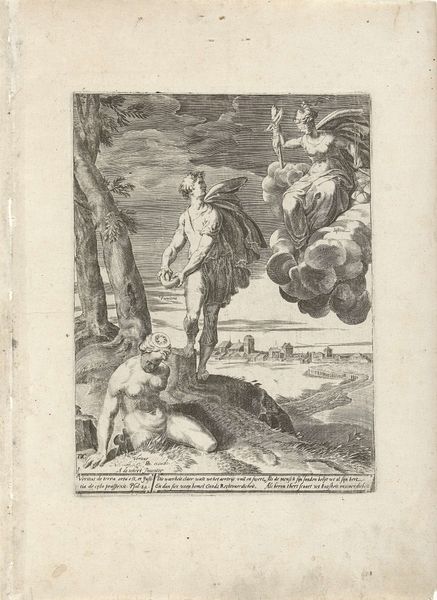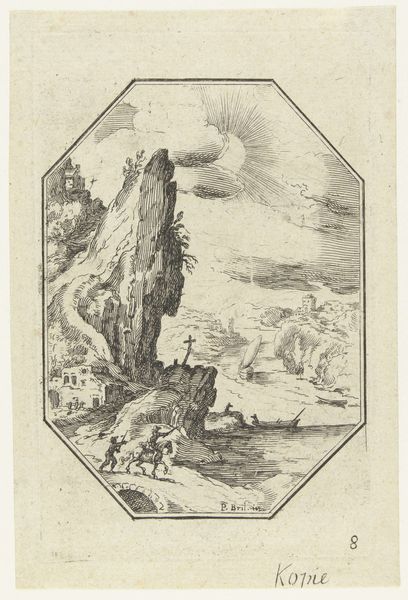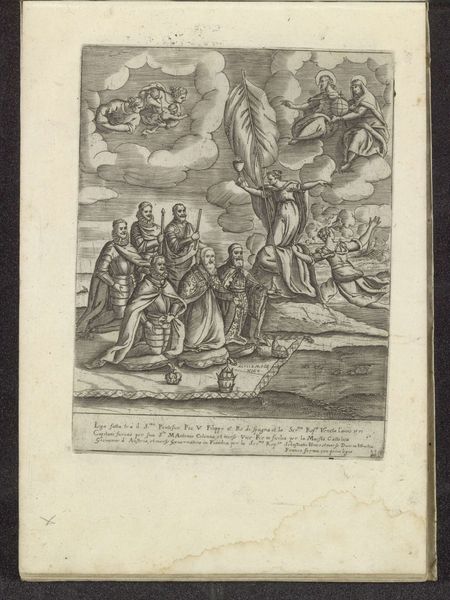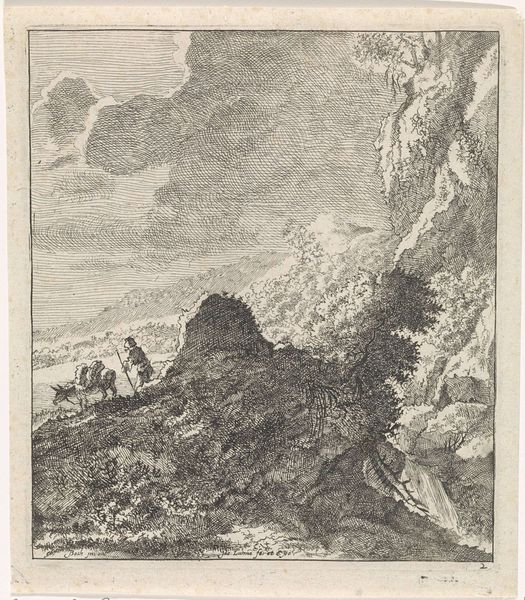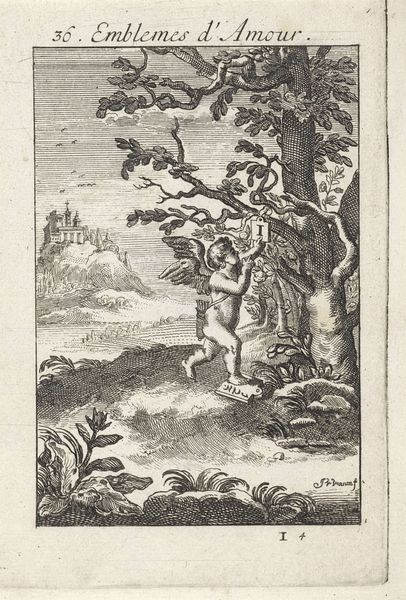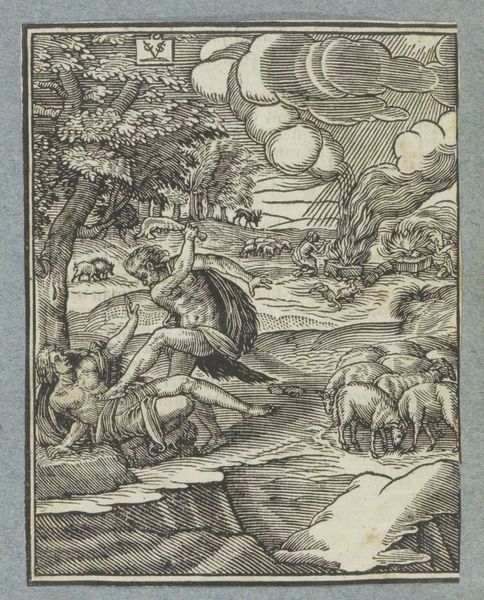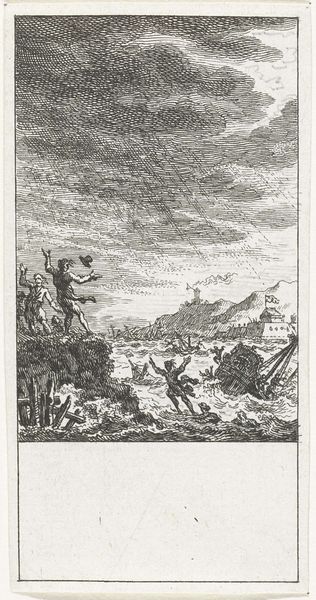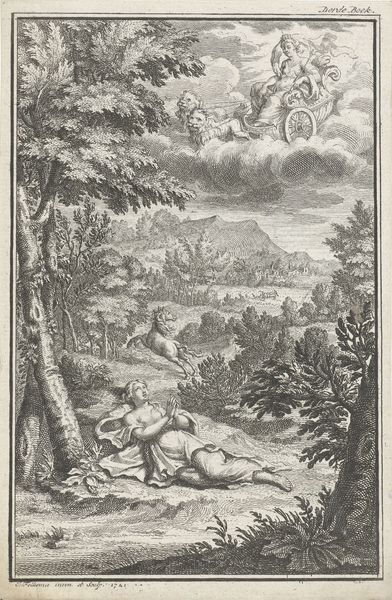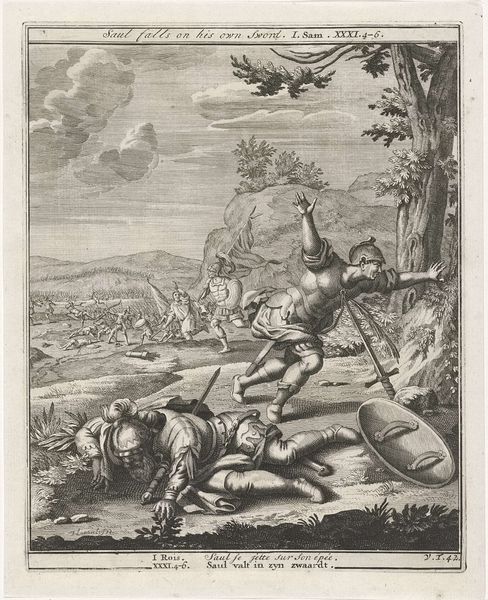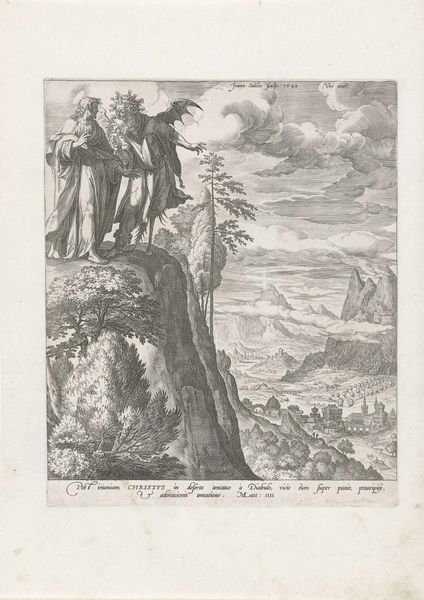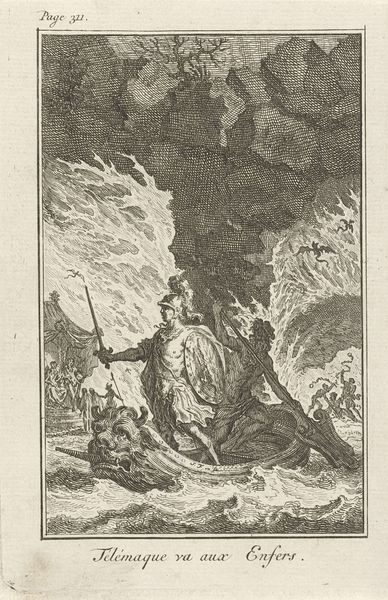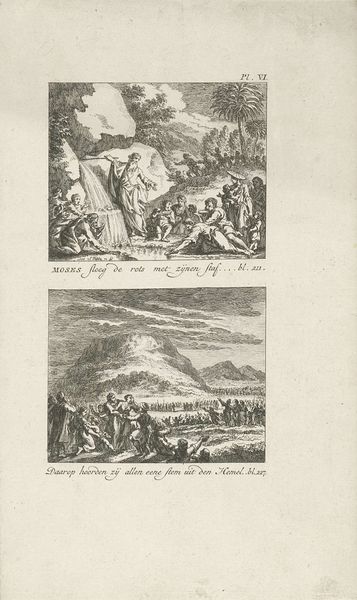
print, engraving
#
baroque
# print
#
landscape
#
history-painting
#
engraving
Dimensions: height 194 mm, width 141 mm
Copyright: Rijks Museum: Open Domain
Arnold Houbraken created this print of a volcanic eruption using etching, sometime between 1679 and 1719. Etching is an intaglio printmaking technique that uses acid to corrode the unprotected parts of a metal surface to create a design. The plate is prepared with a waxy, acid-resistant ground. The artist then scratches off the ground with a pointed etching needle, exposing the metal. The plate is then immersed in acid, which bites into the exposed metal, creating lines. This print is a testament to the skill of the etcher, who meticulously rendered fine details and tonal gradations, to create this dramatic scene, using only line. The printmaking process, while demanding, allowed for multiples to be produced and distributed widely, making art more accessible to a broader audience. Houbraken's choice of etching as a medium reflects the growing accessibility of art production in his time. Understanding the material and processes used in creating artworks like this helps us appreciate not only the final image, but the labor, skill, and social context in which it was made.
Comments
No comments
Be the first to comment and join the conversation on the ultimate creative platform.
